British guitarist John McLaughlin is one of my music heroes. I was 13 years old and starting to play the guitar like the blues artists I admired. One night, some friends and I went down to the Fillmore East on a Tuesday "Audition" Night. The opening band was the Tony Williams Lifetime and that show totally changed my perspective on music. Here were some guys who could play their instruments better than anyone I had heard at the time and were stretching the ears of the audience. I've been a fan ever since and I can say that John McLaughlin continues to stretch the ears of his listeners to this day.
It's really pleasing to discover that your hero is a witty and charming person who still possesses the energy and passion for music of a teenager.
You were one of the first people to use a guitar synthesizer controller. How has your approach evolved over the years?
I began using the 360 Systems guitar controller between 1974-75. I had two synth rigs. One was a box containing 6 Minimoog modules, and the other was a system loaned to me by the good people at Emu. They were both 'Elephants' in terms of tuning, transporting, etc., but they worked pretty well for that time.
My use of synths on stage since the 1990's, has been limited to the trio with Trilok Gurtu and Dominique Di Piazza. Curiously, this trio was again with acoustic guitar with a piezo bridge system installed by Larry Fishman of Fishman Transducers, and it worked very well. You can hear this on my 'Live at the Royal Festival Hall' CD.The inspiration behind all my guitar-synth experiments lies in a desire to use different forms, whether orchestral, employ the sound of virtual instruments, or just a good synth sound. My experiments continue today.
My approach has always depended on the degree of sophistication of the technology. The perennial problems have been latency, and glitching. These elements have always needed to be taken into account when playing since they can affect the way the synth responds to your playing. This situation demands a new approach to playing.
Synthesizers are such a marvellous invention. As far back as the early 1980's when the Synclavier appeared on the scene, it was a revolution for me. This was an amazing synthesizer and the first digitally programmable one. I used it a lot in concert and on the 1980 recordings I made. I still regret the disappearance of the Synclavier.
There're a zillion sounds out there. The thing is to find something that speaks to you in some way that makes you dream or get some images in your mind. I'm not what you would call a sound designer, but I like to fool around with it.
Are there any particular musicians that you admire for the way they use new technologies in their music?
The only other guitar player who has really worked hard with guitar synth is Pat Metheny. We were both playing the Guitar Synclavier way back in the early 1980's, and he has done some fine work with guitar synth.
How has computer technology contributed to your compositions and performances in the most positive ways?
In terms of composition, computers are indispensable. Having written two pieces for (acoustic) guitar and symphony orchestra, I can say categorically that I would have never been able to accomplish the written scores and demos without computers and synthesizers.
For example I have recently written a piece for solo violin and sound design. It's about six minutes or something long, called "I Don't Remember." I recorded it for myself, so I could give it to the violin player. I used the synth guitar on that, because it's a great way to produce the score easily.
We did another studio recording called Que Algria also with the same setup. The synths used in the setup were TX and DX synthesizers from Yamaha. I also use synth with the Shakti group, principally for orchestral textures.
But I don't have any fixed way of working these days. The music will arrive in my imagination unannounced. And I'll be sitting there and I'll go, "That's very interesting." And so I've got my iPhone. It might be a melodic idea, it might be a rhythmic idea, and I'll just sing it into my iPhone.
Do you play piano?
Yea, but refugee style (laughs). The violin part in the piece is quite virtuosic. The woman who'll play it is a Russian by the name of Viktoria Mullova and I wrote it for her. She plays the great classics, but she also does innovative pieces. And sometimes the pieces cross over into folk music. She's very adventurous. At some point, it will be recorded.
I'll use a keyboard some times. I began my musical life as a keyboard player and as a pianist. My mom was a violinist and I started to take lessons when I was eight. I have knowledge of harmony on piano. In fact, it's easier for me to work harmonically on piano than it is on the guitar.
What have you been using most recently to get MIDI from your guitar?
Larry Fishman has brought out a guitar MIDI unit that he developed with a super engineer Andras Szalay from Hungary. It's called Triple Play and it is without doubt a giant leap forward for MIDI guitar. Not only is it fast, it is wireless! It's easy to install on a guitar without making a screw hole. Andras gave me a prototype last year and I used it on a CD that I recorded with my group earlier this year. It really is way ahead of all the competition.
How do you go about sound design?
There are many programs on the market. I once recorded hitting a magazine on the tabletop to get that sound and then just messed around with it until it spoke to me. Sometimes I'll take a sound from some arbitrary program, or even from a synth like NI's FM8, fool around with it and then add stuff to it.
Psychoacoustics is quite a fascinating area. I began to experiment with Industrial Zen. The thing is, it's not just that you have to find the sound. You have to find the sound that speaks to you but is also part of the overall idea that you have in your head or your imagination. And that's something else. The six minute piece I'd say took me over six months to make. It was like a minute a month.
I'm fascinated with the domain of synthesizers, because with them you can find ways into the subconscious. I think it's just that I'm curious about what's in my subconscious, because in the subconscious there're all kinds of iconic sounds and visions and mythic fragments. Just as we grow up as a human being, we grow up with these iconic things and mythic ideas that we learn in school and we learn in literature. But a part of the human sub consciousness, the collective subconscious...we've been around for a long time, as human beings, and I mean, the Earth has been around for a much longer time.
In a way, for me, music is one thing. I'm a musician and I love to play and improvise. For me, jazz and improvised music is a way of liberation, personal liberation. But the domain of synthesizers, and sound design if you will, is for me more of a research into my unknown mind. That's really the only way I see it. Since I'm the biggest mystery...the biggest mystery in the world is myself in this amazing universe we live in. We can never find out what we are. We look inside and there's nothing there, is there? There're just a bundle of thoughts and ideas and feelings and all kinds of mysterious ideas floating around in our consciousness, which itself is directly related to the subconscious, the unconscious. And I think this is what my work with synthesizers, in that way, is something that I'll get deeper into as time goes by.
That's exciting for your fans...
It's exciting for me too. There're a lot of strange things going on inside.
My wife, she always has a pen and paper in case that happens because she got tired of me writing on napkins, so if I have an idea will write in down in the restaurant or say it into my iPhone. And this is really how I do it. If I have a harmonic idea, if I have a keyboard near me, I'll go to the keyboard. If I don't, I'll do it straight on the guitar and just find out what it is that's going on in my head, which harmonic movement it is and where the voices are going.
The thing is, for example, there's a tune on Now Here This. I started just fooling around with a simple kind of riff. It's in twelve, but it's subdivided between five and seven, and it's just a simple modulation from E minor to A, but I liked the rhythmical combination. That's what I'm talking about with the Konnakol, you're able to do subdivisions very easily in your mind, and it's just a question really of tying it to an instrument, whichever one you happen to have. And I started playing it backwards and forwards and all of the sudden, there was a melody. It just came from nowhere. But the thing is I don't care where it comes from. It'll either come or it doesn't come. That's why I can only make a record at certain times, when enough music—what I consider to be good and recordable music—comes, then I'll make some scores and make some demos and send them to the guys and say I'd like to record this within two months time.
Have you ever published an educational course for people that want to learn about your approach?
I put out an educational DVD called Gateway to Rhythm, and it's how to master rhythm with your voice. It's a system called Konnakol I learned almost 40 years ago. It's a marvellous system because you can understand any rhythm coming from any culture because all rhythm is mathematics. And this system of Konnakol, you can sing basically anything and keep the rhythmical cycle going with your hand. This is just a prologue into what might happen, because sometimes I don't know where I am. I can be in a play or I can be driving or I can be in a restaurant.
What do you like about the Godin guitars that you've used in the past?
John with his Godin LGX-SA
I go way back with Godin, let's say, maybe eight years or nine years. And at that time, I had an idea that had been germinating in my mind to do an educational DVD. My concept was to have a musical score in sync to everything that I do.
On the bottom of the screen, you have a musical score that's in sync to all the audio. Thing is, how do you do it? So I ended up figuring out, okay, if I'm going to get a score from the guitar, it's going to have to be MIDI. I'm going to have to record audio and MIDI simultaneously and then extract the MIDI file, clear that of the glitches—MIDI eight years ago was a little glitchy, to say the least. So this is what I did.
I had to find a guitar that had a good audio sound and had a good capture. And the Godin was recommended by a friend of mine. I went and tried it and I said this is great! First of all, it's got a great sound as an electric guitar. Secondly, the MIDI capture was really good. It was the best I'd seen at that time.
Though it ended up being three DVDs, not one. I planned it being one and it ended up being three and it's quite extensive. So there I had my Godin guitar recording MIDI, recording audio, and then the tricky part was to get the MIDI file from the guitar and basically export it, clean it up and import it back into the mainframe. We had some problems. It got very tricky. But we nailed it in the end. And once you do see it, you'll see that it's actually pretty amazing because of the audio improvisation done on the DVD, but there're scores that are improvisations that you can download—actually all of the scores are PDFs on the website, so you can print them out if you want. And then, basically I would take that MIDI score—the score, created from MIDI—and after I do the improvisation, I go through it on a big screen with reference to all of the different exercises that I propose prior to the improvisation in that particular chapter. And I point out were these references are. So the score was indispensable. It was essential. And I've got to thank Robert Godin for that.
He didn't give me a guitar. I bought it at a store so I could use it. The DVDs came out two and a half years later and I got a letter from Robert saying, "Thanks for using the guitars. It was really nice of you." I said: "Hey, the pleasure's mine." And that's how we got to know each other.
It took eighteen months to make this DVD boxed set, and by the time I finished, I really knew the Godin guitar. And I just kept playing it. You know that DVD that just came out with Santana from the Montreux concert two years ago. It's with Godin. And it's great, sounds great.
You're a guitar player, right?
Yes. I am a guitar player and when I started playing, I was into the blues. I was like 13 or 14 years old and just starting to learn to play the guitar. And one night, some friends and I decided to go down to the Fillmore East to see a guitar player on a Tuesday Audition Night. There were maybe thirty people in the entire Fillmore East, so we were right up in the front row. And you guys came out, you, Tony Williams and Larry Young. And that show totally changed my perspective on music. You guys could've been from another planet. I don't remember what year it was, probably like 1970, maybe '71.
No, there was no bass player.
Okay, so it would've been '69. So you go back. I've got to tell you, on the Santana DVD, you're going to see a Lifetime segment. Cindy Blackman is the only woman I know who plays in the way of Tony. And we do two Lifetime tunes. I mean it's really something.
So here's my question: What kind of advice would you give about music and the music business? And would that advice be any different from the advice you would have given to someone in 1969?
The music business is business. It has very little to do with the passion of playing music. That's really the pivotal word here. If you lack the passion, you'll fall by the wayside. That's the only thing that will pull you through, and your determination and your love, because that's it. How I was all those years ago when I was in my mid-20s and how I am now, almost fifty years later, nothing has changed.
Absolutely nothing has changed. I'm still the young hippie that I was. Nothing wrong with those hippie days, I'll tell ya. But of course I have a lot more experience. The thing is...do you remember what I said before? I see music, particularly improvised music—could be Indian music, Spanish music, Chinese music, it doesn't matter—for me it's a way for liberation. It's the path to freedom. It's not easy, which is why without perseverance and determination and deep, deep love, it's just tough. It's tough anyway. But what music gives back is like a thousand times more than we put in, that's all I can say....
That's beautiful. Thank you. If you could speak generally to music product developers what would you tell them you wanted?
I would say you are all doing a great job!!! Keep it coming.
John McLaughlin is currently touring Europe with Shakti Remembered. He celebrated his 72nd birthday on January 4th of the new year.

Find Pro Tools Ultimate in the KVR Marketplace

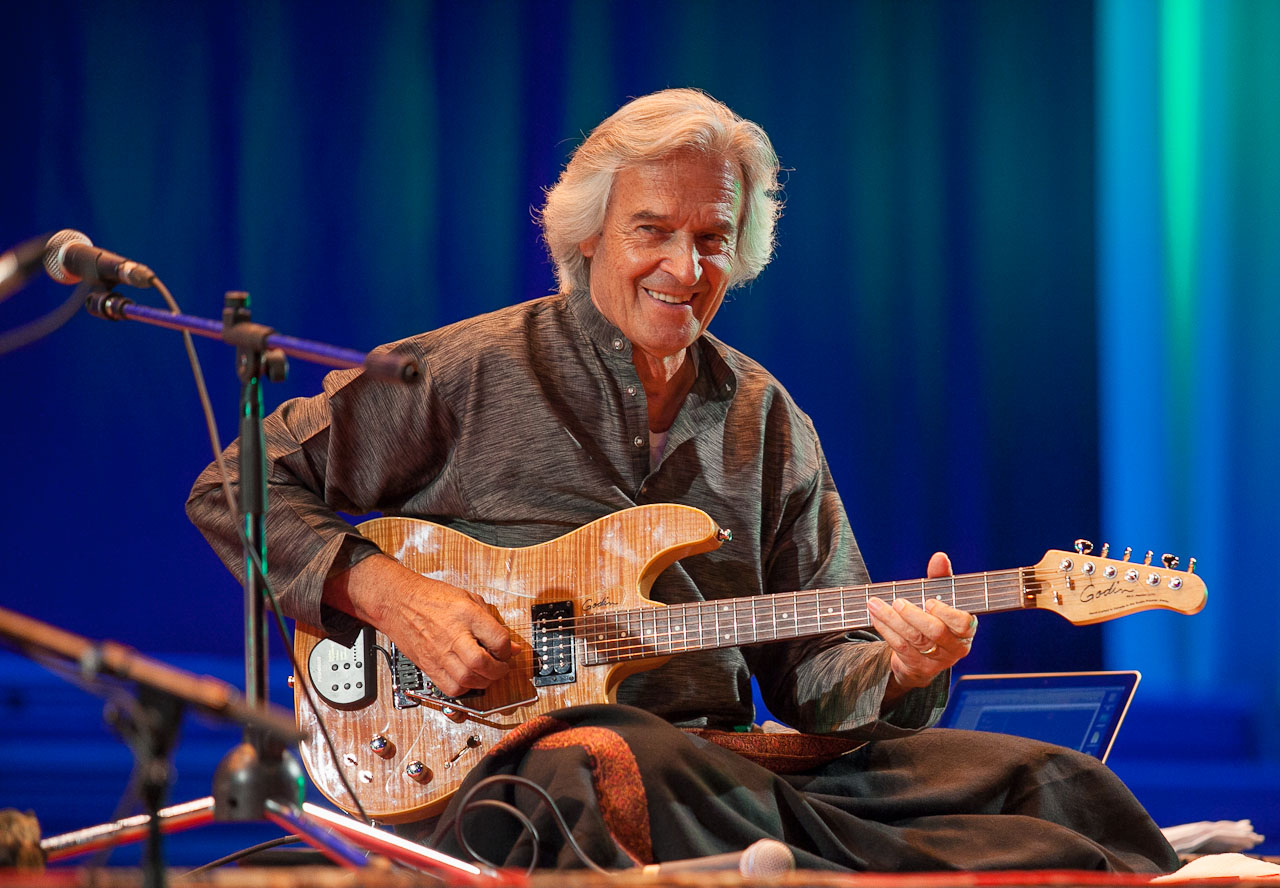

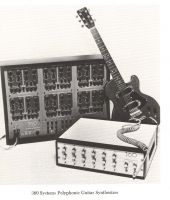
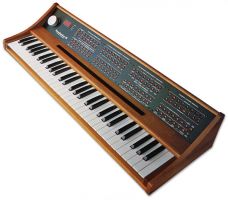
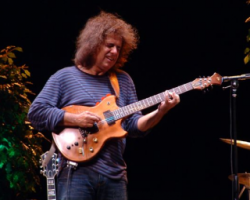
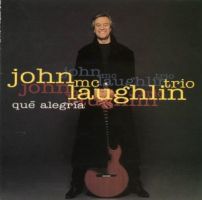
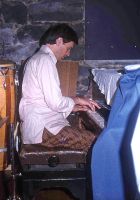
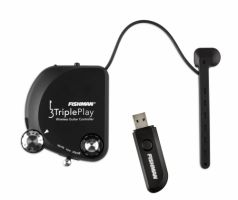

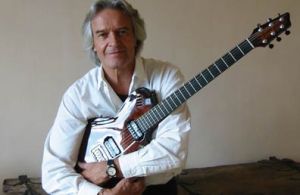
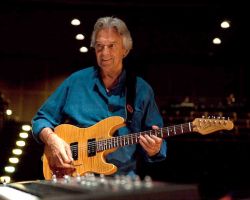
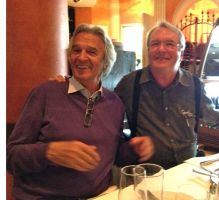
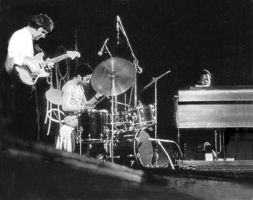
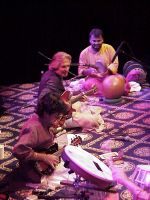

 Other Related News
Other Related News
